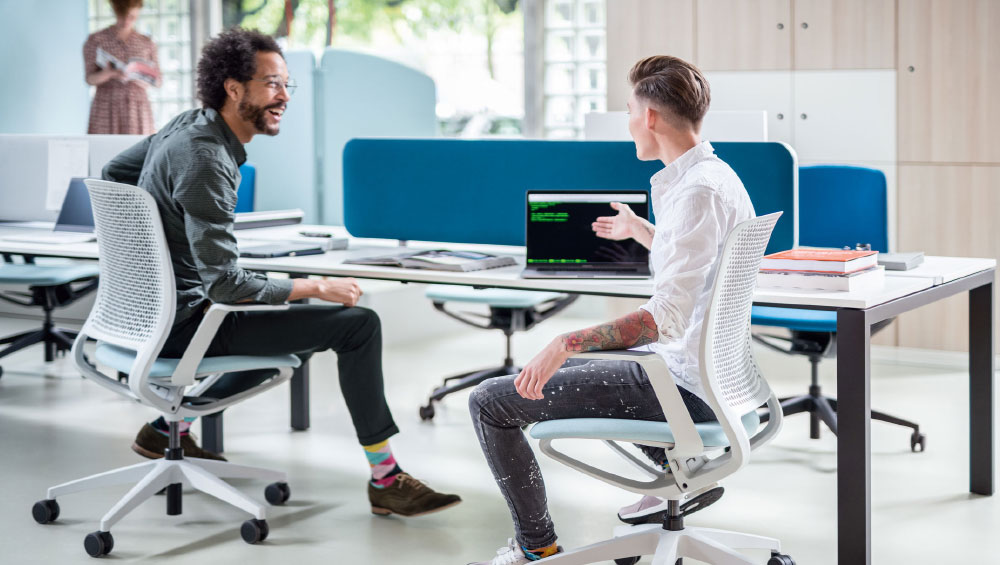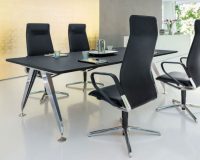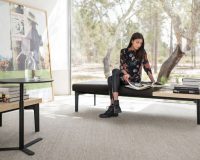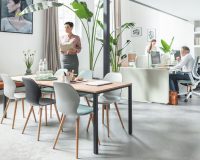It is a universal truth to say that humans are the products of their environments. That is why we enjoy such physical, social and cultural diversity. The Spanish philosopher Jose Ortega y Gasset once famously wrote ‘I am I plus my surroundings and if I do not preserve the latter, I do not preserve myself’. It is true for every aspect of our environment, from the landscape in which we live to our offices and homes and cities and right down to that most intimate aspect of our surroundings, the furniture. As the writer JG Ballard once observed ‘furniture constitutes an external constellation of our skin areas and body postures’.
Over the past 60 years in particular, as we have witnessed the proliferation of information technology and seen its effect on our lives, people have begun to ask more and more questions about what they expect from their offices or even why they need an office at all.
Out of this process of enquiry we have arrived at a new understanding of what exactly physical space contributes to organisations and the people who work for them.
Lipstick on a gorilla
So, firms are focussed increasingly on issues such as aesthetics but also space efficiency, knowledge management, corporate identity, churn, productivity and staff retention. And the reason why they are concerned with these issues is because they understand the impact they have not only on the wellbeing and productivity of individuals but also how they affect the health of the business.
Naturally, most workplace managers and designers already have a more sophisticated understanding than most about the interplay of the building, the organisation, the people who work for it and the technology they use. We already have the research, the know-how, the experience and the examples to understand how to create the best workplaces we can. The trick is not to fall into the trap of seeing design as – in Dieter Rams’ famous expression – ‘putting lipstick on a gorilla’.
The subtlety of workplace design is far less likely to be a motivator if the culture of the organisation and other working conditions are not aligned to it. Similarly, we can’t avoid the fact that many people may be happy working for a good employer on a job they enjoy in what we nowadays perceive to be a poor working environment. Although, of course, the ideal scenario is one in which all of the pieces fit – a good job with a good employer in a motivational working environment- employers have to take a lead in establishing their organisation’s work culture, and they have a variety of pecuniary or physical restrictions in trying to meet their vision.
The link between design and productivity
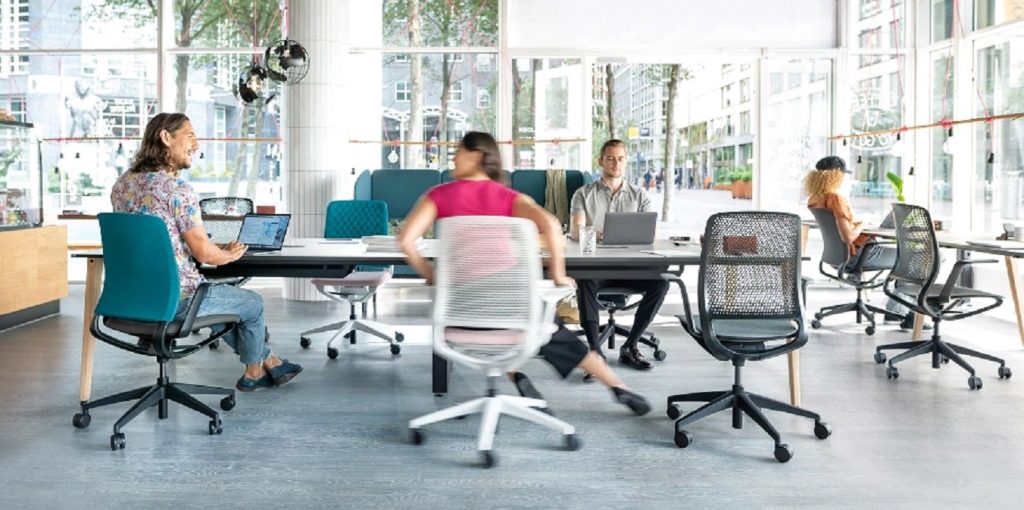
One thing that we can be sure of is the direct link between productivity and workplace design and management, although there is an ongoing challenge in getting this truism accepted by senior managers. In theory this debate should be over by now, given the sheer volume of proof that now exists both in academic research and the less lofty but perhaps more convincing realms of personal experience. It’s because of this that we should acknowledge that at some level everybody knows for a fact that there is a link between our surroundings and our wellbeing and happiness, otherwise not only would we all still be contentedly living in caves and the only thing making employers provide decent workplaces for employees would be the big stick of legislation.
What we find in practice is that the vast majority of people work in at the very least good if not exceptional workplaces and are provided by their employers with a fair or good degree of comfort, natural light, fresh air and control over how they work along with all those other enlightened features of the contemporary office we take for granted.
However, if this is true why is there still a constant need to convince ourselves and senior managers? Why is the feature on office design and productivity a staple element in both the media and online forums. If we assume that the main argument has already been proved beyond reasonable doubt, the only answer can be that there is another, more interesting point lurking behind it all, namely some sort of perception that facilities design and management is not necessarily something that should occupy too much management time.
This flies in the face of all the evidence. Our quest to determine the nature of the link between the office and performance dates back to the 1920s with the famous Hawthorne experiments. More research by Frederick Hertzberg in 1966, appeared to show that the workplace was a hygiene factor, meaning that a poor workplace was a demotivator but a good workplace was not necessarily an important motivator (something worthy of another feature). Since that time however, a great deal of research has been carried out which paints a rather more sophisticated picture of the complex relationship we have with our surroundings.
An open and shut case

The case is, frankly, incontrovertible. So too is the business case for going beyond what is demanded by legislation and providing a solution based on what is best for the people who work for the organisation. Small investments in design, equipment, management and working culture can produce disproportionately significant effects on productivity, wellbeing and staff recruitment and retention. Even in our own sometimes neglected specialism of office interior design the amount of money that differentiates a decision between two possible options can be very significant indeed. To take just one element, a fairly simple ROI model shows that the payback period for an investment in ergonomic seating and training has a payback term measured in weeks rather than months. For people such as fee earners in law firms, the payback term is likely to be measured in days or even hours.
So we are left with the problem of perception and it is this that we should be addressing, not finding more evidence for something that is pretty clear cut. So how do we deal with this? Well, telling people is one thing. Showing them is entirely another. The media does a good job in sharing experiences within this sector, but there is always scope for more opportunities to learn from what other people have done. This is particularly powerful when you can see what is happening with organisations that have similar challenges to your own, whether because they are in the same sector, have similar property or face the same issues involved in coming up with an office design that does all the good things we would like it to.
The best research usually has a list of complex variables that must each be addressed to achieve the desired increases in personal wellbeing and productivity. It’s not easy but it pays off. Equally important is not only what product is specified to deal with a specific aspect of productivity, but how it is applied, perceived and managed. And if we can get these messages out, in all their complexity and sophistication then we may finally get somewhere in finally winning an argument that in truth was over years ago. This will demand a complex and holistic approach to office design that takes account of all of the factors that go to make a productive workplace.

